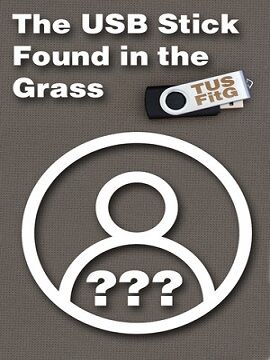
Brand
- M&S Collection 108.687
- Rhodes + Scholes 98.906
- Sandvik Coromant 34.541
- Portwest 31.846
- Mascot 31.396
- VELUX 25.265
- Routledge 23.776
- Fruit Of The Loom 23.265
- Blaklader 20.650
- Slingsby 19.833
- MTP Products 18.517
- EUROKRAFTpro 18.139
- Nobody's Child 17.971
- Gemini Interiors 17.769
- Maroxe 16.560
- BOSS 14.122
- Russell 13.077
- White Stuff 12.769
- Moon Magic 12.566
- Nike 12.370
- Autograph 12.013
- Lyle & Scott 11.977
- ECCO 11.250
- Ergomat 11.169
- Air Jordan 10.923
- Dams 10.253
- Gildan 10.019
- Life Essentials 9.916
- Sealey 9.697
- QP Jewellers 9.543
- Stanley 9.273
- KENZO KIDS 9.164
- Vale 9.004
- Impulse 8.815
- Festo 8.397
- Sid & Sam 8.116
- Carpe Diem Beds 8.045
- Pour Moi 7.950
- TopVue 7.862
- B&C 7.826
- Style and Chic 7.809
- Monsoon 7.741
- Merkel Designers 7.632
- FatFace 7.537
- Unbeatable Bargains 7.490
- Tyrell & Tyrell 7.419
- The Home Maker 7.230
- Kennedy 7.209
- Seasalt Cornwall 7.165
- SHINEANDGLORY 7.073
- Regatta 7.013
- Wonders 6.997
- Direct Imports 6.982
- All Things Good 6.956
- Discount Dealers 6.924
- Prestigious Textiles 6.895
- Millennium Furniture 6.885
- Casper Homes 6.876
- R and M Furniture 6.840
- Merlin Deals 6.564
- Kustom Kit 6.408
- Decor Base 6.399
- CooperVision 6.273
- Regatta Professional 6.270
- Brittle & Co 6.269
- TRACOPOWER 6.256
- 3M 6.245
- Design Hut 6.150
- Premier 6.125
- adidas 6.034
- Result 5.984
- ORN 5.883
- Finery London 5.770
- Timberland 5.769
- SOSANDAR 5.710
- Crew Clothing 5.694
- Liverpool FC 5.667
- C&P 5.653
- CRC Press 5.650
- Sergio Rossi 5.550
- Co 5.511
- BILLIEBLUSH 5.476
- TIMCO 5.421
- Watco 5.382
- Outsunny 5.339
- Silent Gliss 5.311
- Charlotte Dunes 5.290
- Body by M&S 5.273
- Callaway 5.224
- B&C Collection 5.204
- Dunlop 5.136
- Haynes Manuals UK 5.132
- Steam 5.057
- Savings Store 4.995
- Build Your Brand 4.918
- Ace & K 4.901
- FAG 4.871
- Zoro Select 4.854
- Velux 4.791
- Goodmove 4.773
Colour
- Black 159.486
- White 70.250
- black 68.144
- Blue 53.340
- Grey 31.331
- white 30.422
- Navy 29.702
- Green 27.738
- Brown 27.586
- Pink 27.017
Size
- XL 50.472
- S 36.442
- M 35.564
- L 34.168
- 2XL 32.713
- Medium 25.804
- Large 25.521
- Small 24.882
- 8 23.443
- XS 22.972
Gender
Merchant
- Zoro UK 819.917
- Marks & Spencer UK 336.465
- Home Done 178.587
- Zoro UK Limited 87.690
- Glisshop uk 66.919
- Kids around 64.086
- Workwear Supermarket 58.733
- RS Components UK 45.294
- Alensa.co.uk 44.951
- Maroxe 44.522
- AndLight.co.uk 38.527
- Kick Game 37.259
- Routledge 32.808
- MyTrendyPhone.co.uk 32.343
- Your Stylish Home 29.955
- VELUX UK 25.265
- K4G.COM 22.559
- Orthopeca UK 21.759
- QD Stores 18.564
- Golf Gear Direct 17.424
- Click Golf 17.118
- Belveto 15.871
- Suit Direct 15.349
- Nobody's Child - Cabiro 15.277
- LuisaViaRoma.com 14.611
- Acorn Fire & Security 14.001
- Plusshop UK [OLD] 12.843
- Moon Magic 12.566
- Lime Lace 12.521
- gb.ecco.com 11.927
- Lyle & Scott 11.678
- Seal Medical 9.998
- QP Jewellers 9.543
- My-Deco-Shop 9.397
- Selfmade.com 9.107
- Argento 9.035
- Ann's Cottage 8.475
- Wrong Weather 8.305
- carpediembeds.co.uk 8.045
- Cowling & Wilcox 7.921
- Craigmore UK 7.498
- Grace & Co Jewellery 7.231
- Building Plastics Online 7.196
- shineandglory.com 7.073
- Wonders - Official Site 6.997
- Perfect Little Thing 6.863
- Cherry Lane 6.820
- Erysta 6.617
- uk.plusshop.com 6.405
- Slam City Skates 6.174
Price (EUR)
- <5 127.112
- 5 - 10 122.352
- 10 - 20 238.901
- 20 - 50 577.659
- 50 - 100 472.855
- 100 - 200 365.889
- 200 - 500 307.003
- >500 339.017
























